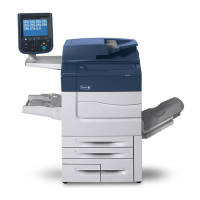The nonexistent instruction, the privi leged instruction
violation,
and the unimplemented instruction trap conditions
can
never
occur
during
execution
of
the AN
LZ
instruction.
However,
either
the nonexistent memory address condition
or
the memory protection
violation
trap condition (or both)
can
occur
as a result
of
any memory access
initiated
by the
ANLZ instruction. If
either
of
these trap conditions occurs,
the instruction address stored by an
XPSD
in trap location
X
'
40
'
is
always the virtual address
of
the AN
LZ
instruction.
The
detai
led operation
of
ANALYZE is as follows:
1.
The
contents
of
the location pointed to by the
effective
virtual address
of
the
AN
LZ
instruction is
obtained.
This
effective
word is the instruction to be
analyzed.
From
a memory-protection viewpoint, the instruction
(to be
analyzed)
is
treated
as an operand
of
the
ANLZ
instruction;
that
is, the
analyzed
instruction may be
obtained
from any memory
area
to which the program
has read access.
2. If the operation code portion
of
the
effective
word
specifies an immediate-addressing instruction type, the
condition code
is
set
to
indicate
the addressing type,
and instruction
execution
proceeds to the
next
in-
struction in sequence
after
AN
LZ.
The
original
con-
tents
of
register R are not changed when the
analyzed
instruction
is
of
the immediate-addressing type.
If
the operation code portion
of
the
effective
word
specifies a reference-addressing instruction type, the
condition code
is
set to
indicate
the addressing type
of
the
analyzed
instruction and the
effective
address
of
the
analyzed
instruction
is
computed (using
all
of
Tne
normai address compuTaTion ruies). if
biT
0
of
tne
effective
word is a 1, the contents
of
the memory
lo-
cation specified by bits 15-31
of
the
effective
word
are obtained and then used as a
direct
address.
The
nonallowed operation trap (memory protection
viola-
tion or nonexistent memory address)
can
occur
as a
result
of
the memory access. Indexing is always
per-
formed (with an
index
register in the current register
block)
if
bits
12-14
of
the
analyzed
instruction
are
nonzero. During real extended addressing, the
effec-
tive
virtual address
of
the
analyzed
instruction is
aligned
as an
integer
displacement value and loaded
into register
R,
according to the instruction addressing
type, as
follows:
Byte Addressing:
MA=O
Byte Addressing: MA=l,
MM=O
Halfword Addressing:
MA=O
Halfword Addressing:
MA=l,
MM=O
Word Addressing:
MA=O
Word Addressing: MA=l,
MM=O
Doubleword Addressing:
MA=O
Doubleword Addressing:
MA=l,
MM=O
When the ANALYZE instruction is
executed
in the
master-
protected
mode and a trap condition occurs,
it
traps
only
on an
indirect
ANALYZE. Otherwise, instead
of
trapping
it
completes its
execution
by storing in register R the
ad-
dress
that
would have caused the instruction to trap. Since
the mode
is
master-protected,
the access protection codes
wi
II
apply to the
interpretation
of
addresses. If a slave
mode program is trapped because an instruction has
refer-
enced
protected
memory, the ANALYZE instruction in the
master-protected
mode
can
determine which address
aCTuai
iy
caused the trap.
To
aid
the
interpreting
program, when
operating
in the
master-protected
mode, the
AN
LZ
instruction uses bits 1, 2,
and 3
of
register R to
indicate
which memory
access
initiated
by the
AN
LZ
would have trapped.
The
meaning
of
the
pos-
sible codes in register R(1-3) is as follows:
Register R
Bits
R1
R2
R3
Meaning
o 0 0 Successful
generation
of
the
effective
virtual
address
of
the
analyzed
instruction. The CCs
are
set
to the addressing type
of
the
analyzed
instruction and R(10-31) contain the
effective
virtual address
of
the
analyzed
instruction
aligned
as an
integer
displacement
value
ac-
cording to the instruction addressing type.
o 0
The
indirect
reference
of
the
analyzed
instruc-
tion would have trapped because
it
was
either
nonexistent, memory
protected,
or
had a
parity
error.
The
CCs
are
set
to the address-
ing type
of
the
analyzed
instruction and
R(10-31) contain the virtual address
of
the
in-
direct
reference
of
the
analyzed
instruction
aligned
as a word displacement.
Ana
Iyze/Interpret
Instructions 57
